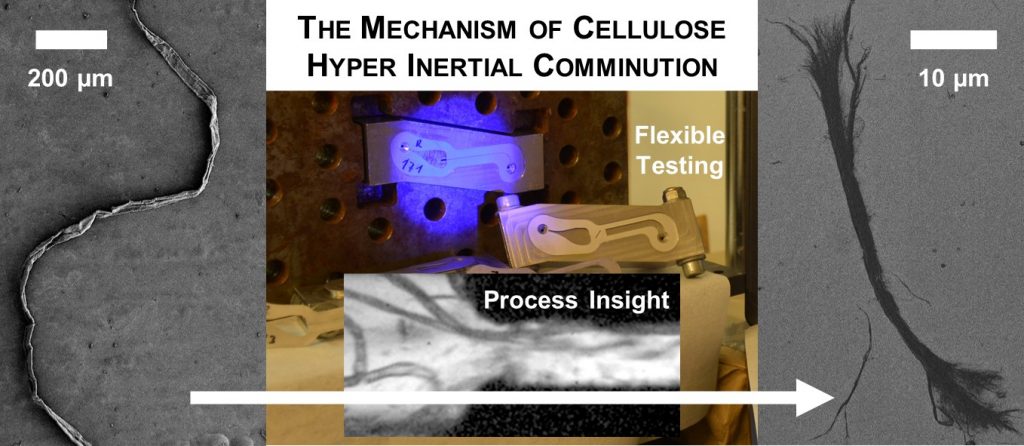Polysaccharide Monooxygenases (LPMOs) for Advanced Nanocellulose Materials
LPMOs (lytic polysaccharide monooxygenases) are oxidative enzymes that enhance cellulose fibrillation by introducing charged carboxyl groups onto the cellulose surfaces in aqueous reaction conditions. The use of LPMOs in production of nanocelluloses could reduce the need of hazardous chemicals and facilitate more environmentally friendly processes. The aim of this subproject is to produce recombinant LPMOs […]
Hållbara isoleringsmaterial för efterisolering av byggnader
Projektets huvudsakliga syfte är att utveckla teknik som kan bidra till att förbättra energieffektiviteten i de stora hyreshus som byggdes på 1960- och 1970-talet och bidra till att uppnå detta på ett hållbart sätt. Ambitionen är att utveckla ett isoleringsmaterial som är 100% biobaserat och återvinningsbart via kartongåtervinningen och därmed bidra till omställningen till en […]
Enhancing the stability of biomass-processing enzymes
We are investigating the basis of (thermo)stability in bacterial biomass-processing enzymes, and will use this information to engineer stability into enzymes of interest in the wood biorefinery.
Renewable High-Performance Materials from the Forest with Designed Degradation – Next Generation of Plastic (Re-Design Plastic)
Sustainable material design can alleviate the environmental burden related to material waste. Use of available and abundant resources, create materials that can be recycled, and final degradability in nature is central to achieve this. The overarching aim of the proposal is to holistically design new materials from cellulose fibers by; developing new sustainable modification strategies, […]
Controlling product characteristics on board machine utilization process data
Quality on any board and paper products is dependent on being able to maintain low variability within product characteristics. A common problem is that these characteristics are measured cannot be measured online in the production, and is the time resolution will therefor be very low. The product characteristics will be dependent on the process characteristics, where […]
Wood hemicelluloses: molecular structure and interactions in plant cell walls
Wood is a formidable composite material with unique biological functions (as secondary plant cell wall) and outstanding properties to be exploited in material applications. Hemicelluloses act as the molecular connection, interacting with cellulose microfibrils and lignins, contributing to wood integrity (biological function) but also to recalcitrance (technical challenge). The dynamics of hemicelluloses in hydrated form […]
Hyper Inertia Micro-Fluidization (HIMF)

Hyper Inertia Micro-Fluidization is a fibre fibrillation process design platform that shifts process understanding into the focus for process design. The goal of HIMF is to capture leading mechanism in fibre fibrillation and destruction by in-situ observation and characterization of treated fibres. An essential element of HIMF is the modular design that allows for a […]
Cavitation Fibrillation of Cellulose Fibres (CaFiCeFi)

The project is of explorative nature and aims on mapping the destructive nature of cavitation on cellulose fibres. Neither cavitation nor the dispersion of cellulose fibres in its constituents (cellulose fibrils for dissolving pulp fibres) is fully understood. The project objective is to guide whether cavitation is a mean for efficient and dedicated fibrillation at […]
Enzyme discovery and enzyme application on wood
Our project aims to identify enzymes that have the ability to increase the efficiency of the biorefinery process, designed for the production of biofuels, -chemicals, and -materials. Specifically, this project aims to find, characterize, and utilize, enzyme that attack specific bonds in the complex biomass structure, to increase the saccharification efficiency of cellulolytic enzyme cocktails […]
Valorization of lignocellulosic biomass for non-fossil chemicals and fuels using photolysis based on LED
Sawdust, a valuable lignocellulosic biomass, is today considered waste and burnt to generate heat. Depending on the sawing process, sawdust might be up to 50% of the timber. An energy efficient valorization of lignocellulosic waste into non-fossil chemicals and fuels minimizes the CO2 footprint and contributes to a sustainable production. A major challenge is to […]
Biomassa från Salix för en biobaserad ekonomi
Målet med projektet är att studera alternativa användningsområden av biomassa från salix, t.ex. som råvara för produktion av biobränslen och av nya biokemikalier. Salix är en snabbväxande gröda med hög biomassaproduktion. För att förstå möjligheten att använda salix som råvara i olika processer behöver vi studera hela odlingssystemet hos salix inklusive både ovan- och underjordsprocesser. […]
Development of advanced methods for investigation and counteracting of membrane fouling during recovery of extracted wood components in biorefinery applications
This project aims to develop and use advanced characterisation methods to investigate how process parameters can be utilised to decrease the effect of surface fouling during separation for recovery of high molecule weight hemicelluloses in biorefinery applications. Characteristics of formed fouling layers that are difficult to measure: thickness as well as cohesive and adhesive strength, […]

